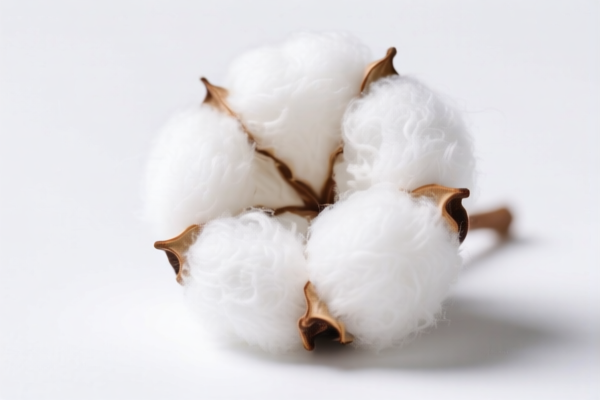| HS Code | Official Doc | Tariff Rate | Origin | Destination | Effective Date |
|---|---|---|---|---|---|
| 5205460029 | Doc | 67.0% | CN | US | 2025-05-12 |
| 5208318090 | Doc | 67.5% | CN | US | 2025-05-12 |
| 5209190090 | Doc | 61.5% | CN | US | 2025-05-12 |
| 5211202120 | Doc | 63.4% | CN | US | 2025-05-12 |
| 5503200025 | Doc | 34.3% | CN | US | 2025-05-12 |




Product Classification: Anti Static Cotton Fibers
Based on the provided HS codes and descriptions, the classification of anti-static cotton fibers may fall under the following HS codes depending on the specific product form and composition. Below is a structured breakdown of the relevant HS codes and their associated tax rates:
🔍 HS CODE: 5205460029
Description: Cotton yarn containing 85% or more cotton by weight (non-retail)
- Base Tariff Rate: 12.0%
- Additional Tariff: 25.0%
- Special Tariff after April 11, 2025: 30.0%
- Total Tax Rate: 67.0%
- Applicability: If the anti-static cotton fibers are in the form of yarn and meet the cotton content requirement.
🔍 HS CODE: 5208318090
Description: Woven cotton fabric with 85% or more cotton by weight, weight ≤ 200g/m²
- Base Tariff Rate: 12.5%
- Additional Tariff: 25.0%
- Special Tariff after April 11, 2025: 30.0%
- Total Tax Rate: 67.5%
- Applicability: If the anti-static cotton fibers are processed into woven fabric with a weight of 200g/m² or less.
🔍 HS CODE: 5209190090
Description: Woven cotton fabric with 85% or more cotton by weight, weight > 200g/m², unbleached, other
- Base Tariff Rate: 6.5%
- Additional Tariff: 25.0%
- Special Tariff after April 11, 2025: 30.0%
- Total Tax Rate: 61.5%
- Applicability: If the anti-static cotton fibers are processed into woven fabric with a weight of more than 200g/m² and are unbleached.
🔍 HS CODE: 5211202120
Description: Cotton blended anti-static fabric, weight > 200g/m²
- Base Tariff Rate: 8.4%
- Additional Tariff: 25.0%
- Special Tariff after April 11, 2025: 30.0%
- Total Tax Rate: 63.4%
- Applicability: If the anti-static cotton fibers are blended with other fibers and processed into fabric with a weight of more than 200g/m².
🔍 HS CODE: 5503200025
Description: Synthetic short fibers, polyester, uncombed, uncarded, or otherwise unprocessed for spinning
- Base Tariff Rate: 4.3%
- Additional Tariff: 0.0%
- Special Tariff after April 11, 2025: 30.0%
- Total Tax Rate: 34.3%
- Applicability: If the anti-static cotton fibers are blended with synthetic fibers (e.g., polyester) and the synthetic component is in this raw form.
⚠️ Important Notes and Recommendations:
- Verify Material Composition: Confirm the exact composition (e.g., cotton percentage, presence of synthetic fibers, fabric weight) to determine the correct HS code.
- Check Product Form: Whether the product is in yarn, fabric, or blended form will influence the classification.
- April 11, 2025, Special Tariff: All listed codes are subject to an additional 30% tariff after this date. Ensure compliance with this new regulation.
- Certifications: Some products may require certifications (e.g., anti-static testing, textile standards) for customs clearance.
- Unit Price and Packaging: Ensure that the unit price and packaging are consistent with the declared HS code to avoid classification disputes.
✅ Proactive Advice:
- Consult a customs broker or HS code expert if the product is a blend or has special treatments (e.g., anti-static).
- Keep documentation on material composition, fabric weight, and processing methods for customs audits.
- Monitor policy updates after April 11, 2025, as additional tariffs may affect cost structures and pricing strategies.
Product Classification: Anti Static Cotton Fibers
Based on the provided HS codes and descriptions, the classification of anti-static cotton fibers may fall under the following HS codes depending on the specific product form and composition. Below is a structured breakdown of the relevant HS codes and their associated tax rates:
🔍 HS CODE: 5205460029
Description: Cotton yarn containing 85% or more cotton by weight (non-retail)
- Base Tariff Rate: 12.0%
- Additional Tariff: 25.0%
- Special Tariff after April 11, 2025: 30.0%
- Total Tax Rate: 67.0%
- Applicability: If the anti-static cotton fibers are in the form of yarn and meet the cotton content requirement.
🔍 HS CODE: 5208318090
Description: Woven cotton fabric with 85% or more cotton by weight, weight ≤ 200g/m²
- Base Tariff Rate: 12.5%
- Additional Tariff: 25.0%
- Special Tariff after April 11, 2025: 30.0%
- Total Tax Rate: 67.5%
- Applicability: If the anti-static cotton fibers are processed into woven fabric with a weight of 200g/m² or less.
🔍 HS CODE: 5209190090
Description: Woven cotton fabric with 85% or more cotton by weight, weight > 200g/m², unbleached, other
- Base Tariff Rate: 6.5%
- Additional Tariff: 25.0%
- Special Tariff after April 11, 2025: 30.0%
- Total Tax Rate: 61.5%
- Applicability: If the anti-static cotton fibers are processed into woven fabric with a weight of more than 200g/m² and are unbleached.
🔍 HS CODE: 5211202120
Description: Cotton blended anti-static fabric, weight > 200g/m²
- Base Tariff Rate: 8.4%
- Additional Tariff: 25.0%
- Special Tariff after April 11, 2025: 30.0%
- Total Tax Rate: 63.4%
- Applicability: If the anti-static cotton fibers are blended with other fibers and processed into fabric with a weight of more than 200g/m².
🔍 HS CODE: 5503200025
Description: Synthetic short fibers, polyester, uncombed, uncarded, or otherwise unprocessed for spinning
- Base Tariff Rate: 4.3%
- Additional Tariff: 0.0%
- Special Tariff after April 11, 2025: 30.0%
- Total Tax Rate: 34.3%
- Applicability: If the anti-static cotton fibers are blended with synthetic fibers (e.g., polyester) and the synthetic component is in this raw form.
⚠️ Important Notes and Recommendations:
- Verify Material Composition: Confirm the exact composition (e.g., cotton percentage, presence of synthetic fibers, fabric weight) to determine the correct HS code.
- Check Product Form: Whether the product is in yarn, fabric, or blended form will influence the classification.
- April 11, 2025, Special Tariff: All listed codes are subject to an additional 30% tariff after this date. Ensure compliance with this new regulation.
- Certifications: Some products may require certifications (e.g., anti-static testing, textile standards) for customs clearance.
- Unit Price and Packaging: Ensure that the unit price and packaging are consistent with the declared HS code to avoid classification disputes.
✅ Proactive Advice:
- Consult a customs broker or HS code expert if the product is a blend or has special treatments (e.g., anti-static).
- Keep documentation on material composition, fabric weight, and processing methods for customs audits.
- Monitor policy updates after April 11, 2025, as additional tariffs may affect cost structures and pricing strategies.
Customer Reviews
No reviews yet.